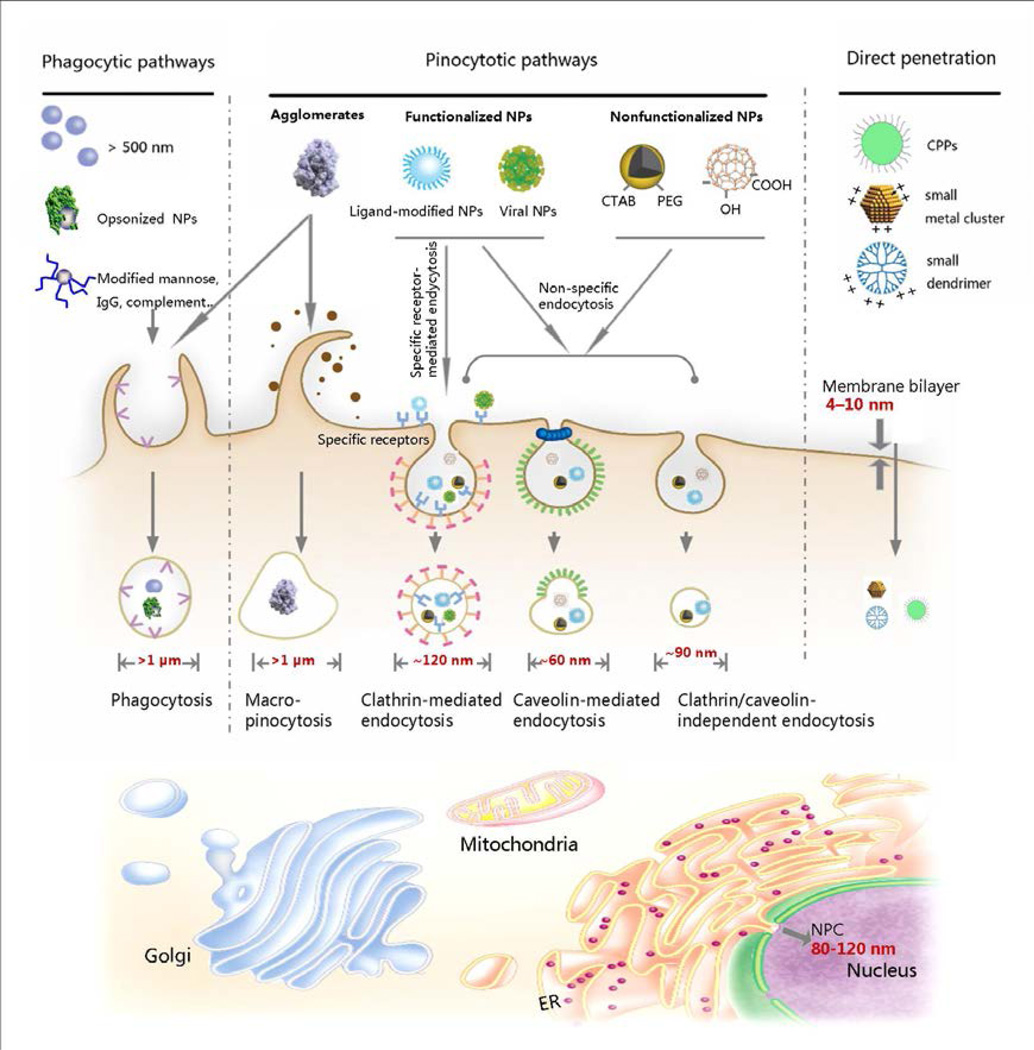Figure 3.
Natural size-rules and gatekeepers within a mammalian cell. The thickness of membrane bilayer is typically 4–10 nm. The nuclear pore complex (NPC) is approximately 80–120 nm in diameter.17 The sizes of endocytic vesicles in both phagocytosis and pinocytosis pathways for nanoparticles internalization were also introduced.24 Phagocytes could uptake large particles (or nanoparticle aggragates), opsonized nanoparticles, or nanoparticles with certain liagnds modification via phagocytosis. Nanoparticles internalization in non-phagocytic mammalian cell is mainly through pinocytosis or direct penetration. With different surface modifications, nanoparticles may be taken up via specific (receptor-mediated) endocytosis or non-specific endocytosis. The heterogeneity of nanoparticles suface and dispersion always take multiple uptake pathways involved. These natural size-restricted structures execute their barrier functions when nanoparticle comes in and out. Therefore, the convergence of spatial sizes indicates that the behaviors (uptake, transport and accumulation) of ENMs are restricted by the innate rules of biology. MR: mannose receptor; PRRs: pattern-recognition receptors, FcγR: immunoglobulin Fcγ receptor, CR: complement receptor, CPPs: cell penetrating peptide; IgG: immunoglobulin G, ER: endoplasmic reticulum; Golgi: Golgi apparatus

